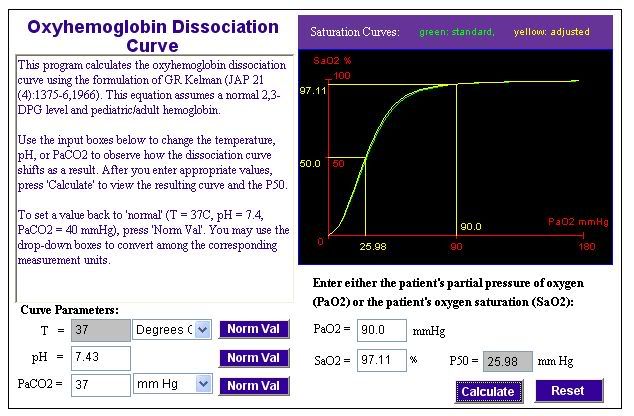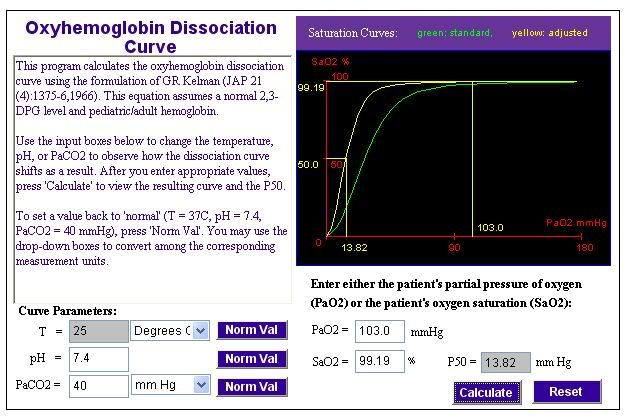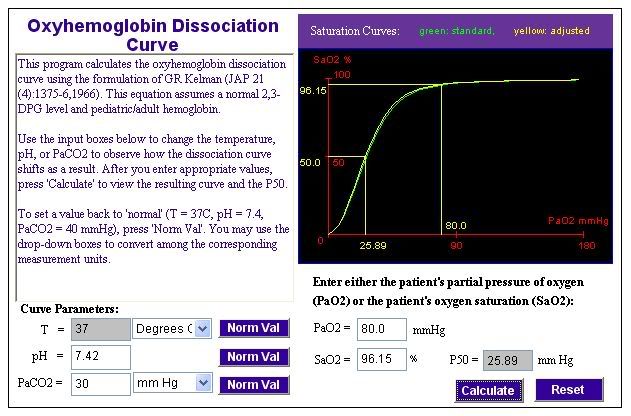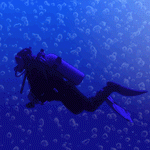If my husband happens to fall asleep in his recliner,he can be breathing quietly and peacefully through his nose with his mouth closed, and then all of a sudden he's not breathing and gasping for air. Of course I wake him immediately and he puts on his mask.geager wrote:tonycog wrote:If your air-way is blocked (the definition of obstructive sleep apnea), it does not matter whether you breath through your mouth or nose. The air will not get to your lungs.
Cpap v's Buteyko
Re: Cpap v's Buteyko
_________________
| Mask: Mirage Quattro™ Full Face CPAP Mask with Headgear |
| Additional Comments: 14/8.4,PS=4, UMFF, 02@2L, |
"Do or Do Not-There Is No Try"-"Yoda"
"We are what we repeatedly do,so excellence
is not an act but a habit"-"Aristotle"
DEAR HUBBY BEGAN CPAP 9/2/08
"We are what we repeatedly do,so excellence
is not an act but a habit"-"Aristotle"
DEAR HUBBY BEGAN CPAP 9/2/08
Re: Cpap v's Buteyko
This is one of the things that concerns me -- I fall asleep in my recliner almost every day. I usually only sleep for about 10-20 minutes, but it still concerns me. The last time I felt that sleepy and tried to lay in the bedroom with my machine, I couldn't fall asleep. Go figure.DoriC wrote:If my husband happens to fall asleep in his recliner,he can be breathing quietly and peacefully through his nose with his mouth closed, and then all of a sudden he's not breathing and gasping for air. Of course I wake him immediately and he puts on his mask.geager wrote:tonycog wrote:If your air-way is blocked (the definition of obstructive sleep apnea), it does not matter whether you breath through your mouth or nose. The air will not get to your lungs.
_________________
| Mask: FlexiFit HC431 Full Face CPAP Mask with Headgear |
| Humidifier: HC150 Heated Humidifier With Hose, 2 Chambers and Stand |
| Additional Comments: Trilogy 100. S/T AVAPS, IPAP 18-23, EPAP 10, BPM 7 |
Re: Cpap v's Buteyko
OK, no problem. Using Henderson-Hasselbach, I have converted the compensated blood gas back into it's uncompensated state, which results in a pH of 7.52. Using the same pCO2 of 30 mmHg and pO2 of 80 mmHg, you can once again see that the point of intersection of pO2 80 mmHg (and that's like a fairly low normal) on the oxygen dissociation curve is barely indiscernible form the "normal" state:Raj wrote:Muffy, I'm not sure the Buteyko people would find your graph convincing. The problem is that you adjusted it for a normal pH, which turns the data you presented into a bit of circular reasoning.

Muffy
________________________________
Machine: Dell Dimension 8100
Mask: 3M N-95 (during flu season)
Humidifier: Avoided, tends to make me moldy
Software: XP Pro
Additional Comments: You can't find a solution when you don't know the problem
Machine: Dell Dimension 8100
Mask: 3M N-95 (during flu season)
Humidifier: Avoided, tends to make me moldy
Software: XP Pro
Additional Comments: You can't find a solution when you don't know the problem
Re: Cpap v's Buteyko
And if that's the case, then trying to apply Bohr is inappropriate.Raj wrote:I doubt the Buteyko people would suggest that extreme and consistent hyperventilation is the norm. I think what they're attempting to address is far more subtle ...
Muffy
________________________________
Machine: Dell Dimension 8100
Mask: 3M N-95 (during flu season)
Humidifier: Avoided, tends to make me moldy
Software: XP Pro
Additional Comments: You can't find a solution when you don't know the problem
Machine: Dell Dimension 8100
Mask: 3M N-95 (during flu season)
Humidifier: Avoided, tends to make me moldy
Software: XP Pro
Additional Comments: You can't find a solution when you don't know the problem
Re: Cpap v's Buteyko
Gotta say that what Muffy is saying makes sense. I am not neccesesrily a fan of Muffy's conversational style but I do know when what Muffy has said is fundamental and meaningful.Muffy wrote:In chronic hyperventilation (chronic respiratory alkalosis), the kidneys excrete -HCO3 in order to correct pH. Compensation starts at about 6 hours and completes in 2 to 4 days, dependent upon a number of factors, but pH normalizes.Raj wrote:Here is what is actually known (as apart from theorized): if blood contains too little CO2, blood pH fails to drop far enough to separate O2 in blood from hemoglobin, resulting in some degree of cellular oxygen starvation depending on the severity of CO2 shortage. This principle was discovered in 1904 by the Danish physiologist Christian Bohr.
With this compensation (and for that matter, even without it), the effect on the oxyhemoglobin dissociation curve is negligible:
In this example, pCO2 of 30 mmHg is utilized, which would represent substantial hyperventilation, and as you can see, at pO2 80 mmHg the difference is indiscernible.
Muffy
As an aside, Buteyko is great when you are young & fit. But to put it very bluntly (from my experience), the techique can bite your bum when you get a lot older. Cpap may prove to be the salvation of a lot of buteyko believers as their musculature ages and other complications (aging & dietary related) intrude.
I like to wish everyone who tries any practiced discipline well, but, sometimes the apparent cure can turn into tomorrow's problem. Cpap is very fundamental, very basic, very pure - with the right machine you simply breathe. Restated: The right machine can make you breathe when you need to which may not always be in line with one's philsophical need to breathe at a particular rate or time. The worst case scenario for when philosophy fails and when practicality wins is the awful story of the world's (in)famous 'breathairians'.
(Note: Australia has a strong sensitivity to alternative practices & breathairianism has featured prominently here in the past - see http://en.wikipedia.org/wiki/Inedia -
this is not in any way intended to denigrate buteyko breathing - but, there are parallels )
DSM
xPAP and Quattro std mask (plus a pad-a-cheek anti-leak strap)
Re: Cpap v's Buteyko
Last fall, prior to starting cpap I followed a link to some videos on u-tube about the buteyko technique and found the control point measurement a great way to monitor asthma severity when not at home where my peak flow meter lives. I also found the basic exercise can help reduce asthma symptoms.
I can't understand how someone would think buteyko exercise and taping ones mouth at night would prevent OSA. I will continue to use the basic buteyko exercise to reduce asthma symptoms and my cpap to prevent/reduce RERAs.
I can't understand how someone would think buteyko exercise and taping ones mouth at night would prevent OSA. I will continue to use the basic buteyko exercise to reduce asthma symptoms and my cpap to prevent/reduce RERAs.
_________________
| Humidifier: S9™ Series H5i™ Heated Humidifier with Climate Control |
| Additional Comments: ResScan 3.14 and SleepyHead software. |
So many ideas, so much fiber, so little time - http://fiberfan.blogspot.com/
Re: Cpap v's Buteyko
So if we use our curve calculator to create a scenario of subtlety (slight increase in breathing to give pH 7.43 pCO2 37 with a more normal pO2 of 90)Muffy wrote:And if that's the case, then trying to apply Bohr is inappropriate.Raj wrote:I doubt the Buteyko people would suggest that extreme and consistent hyperventilation is the norm. I think what they're attempting to address is far more subtle ...

the curves at intersect are superimposed, so Bohr Effect becomes non-existent.
Muffy
________________________________
Machine: Dell Dimension 8100
Mask: 3M N-95 (during flu season)
Humidifier: Avoided, tends to make me moldy
Software: XP Pro
Additional Comments: You can't find a solution when you don't know the problem
Machine: Dell Dimension 8100
Mask: 3M N-95 (during flu season)
Humidifier: Avoided, tends to make me moldy
Software: XP Pro
Additional Comments: You can't find a solution when you don't know the problem
Re: Cpap v's Buteyko
OK, let's wait just a minute there, yeast-breath!Muffy wrote:...the curves at intersect are superimposed, so Bohr Effect becomes non-existent.
Are you saying that hypocapnia is harmless?
Are you ignoring the tons of data that clearly demonstrate the deleterious effects of hypocapnia?
For instance, our friends in Wisconsin (AKA "The Dempsey Group") noted in Controlled versus Assisted Mechanical Ventilation Effects on Respiratory Motor Output in Sleeping Humans that
Or the classic article on Hypocapnia by Laffey who concludedPresent findings extend previous results (discussed previously in this article) by showing in the sleeping human (1) that the increased frequency of CMV need only be as little as one breath per minute above spontaneous eupnea to eliminate respiratory motor output
Well?On the contrary, increasing evidence suggests that hypocapnia appears to induce substantial adverse physiological and medical effects.
What s'matter?
Cat got your...
...your...
...whatever?
NotMuffy
"Don't Blame Me...You Took the Red Pill..."
Re: Cpap v's Buteyko
Laffey? What'd he do besides overventilate a bunch of rabbits?NotMuffy wrote:Or the classic article on Hypocapnia by Laffey who concluded
On the contrary, increasing evidence suggests that hypocapnia appears to induce substantial adverse physiological and medical effects.
Poor Bunnies!
MuffyInjurious mechanical ventilation strategies, associated with adverse outcome, commonly result in systemic hypocapnia. In this paradigm, worsened outcome is thought to be due to the combination of excessive lung stretch and shear forces resulting from repetitive recruitment and de-recruitment of atelectatic lung segments. This causes barotrauma or volutrauma, increased pulmonary production of cytokines, or pulmonary to systemic translocation of bacteria or endotoxin. This is called ventilator-associated lung injury (VALI). In all such instances, hypocapnia has been thought to fulfill a passive role.
________________________________
Machine: Dell Dimension 8100
Mask: 3M N-95 (during flu season)
Humidifier: Avoided, tends to make me moldy
Software: XP Pro
Additional Comments: You can't find a solution when you don't know the problem
Machine: Dell Dimension 8100
Mask: 3M N-95 (during flu season)
Humidifier: Avoided, tends to make me moldy
Software: XP Pro
Additional Comments: You can't find a solution when you don't know the problem
Re: Cpap v's Buteyko
Muffy, would you mind providing a link to that calculator? I want to vary the CO2 values and see what happens.
Thanks,
Raj
Thanks,
Raj
Resmed AutoSet S9 with H5i humidifier/Swift FX mask/ Climateline hose/ http://www.rajlessons.com/
Re: Cpap v's Buteyko
________________________________
Machine: Dell Dimension 8100
Mask: 3M N-95 (during flu season)
Humidifier: Avoided, tends to make me moldy
Software: XP Pro
Additional Comments: You can't find a solution when you don't know the problem
Machine: Dell Dimension 8100
Mask: 3M N-95 (during flu season)
Humidifier: Avoided, tends to make me moldy
Software: XP Pro
Additional Comments: You can't find a solution when you don't know the problem
It Ain't Just pCO2...
OK, by now you may have noticed that of the variables that change the behavior of the oxyhemoglobin dissociation curve, temperature can have the greatest effect. For example, this guy:

has shifted his curve way the heck out there:

such that his P50 is an anemic (so to speak) 13.82 mmHg.
Muffy

has shifted his curve way the heck out there:

such that his P50 is an anemic (so to speak) 13.82 mmHg.
Muffy
________________________________
Machine: Dell Dimension 8100
Mask: 3M N-95 (during flu season)
Humidifier: Avoided, tends to make me moldy
Software: XP Pro
Additional Comments: You can't find a solution when you don't know the problem
Machine: Dell Dimension 8100
Mask: 3M N-95 (during flu season)
Humidifier: Avoided, tends to make me moldy
Software: XP Pro
Additional Comments: You can't find a solution when you don't know the problem
Re: Cpap v's Buteyko
I have reviewed with a very critical eye what the "Buteyko people" are suggesting, paying particular attention to their discussions about minute ventilation and what is "normal", referring to a popular purveyor of this therapy:Raj wrote: I doubt the Buteyko people would suggest that extreme and consistent hyperventilation is the norm. I think what they're attempting to address is far more subtle and, to add an extra confound, inconsistent.
http://www.normalbreathing.com/index-table2-healthy.php
including detailed analysis of their key references
http://jap.physiology.org/cgi/content/full/90/3/889
http://jap.physiology.org/cgi/content/full/104/1/57
and after careful consideration, I have decided that the "Buteyko people" are a bunch of FnAHs.
Muffy
________________________________
Machine: Dell Dimension 8100
Mask: 3M N-95 (during flu season)
Humidifier: Avoided, tends to make me moldy
Software: XP Pro
Additional Comments: You can't find a solution when you don't know the problem
Machine: Dell Dimension 8100
Mask: 3M N-95 (during flu season)
Humidifier: Avoided, tends to make me moldy
Software: XP Pro
Additional Comments: You can't find a solution when you don't know the problem
Re: Cpap v's Buteyko
Hey Muffy, I can't pretend to understand what's going on but I have a query. (don't worry, it's not contagious!)
I tend to sleep better, or at least, fall asleep better on the nights when I've had a long, hot bath. Could internal temp increase have any impact on Complex sleep apnea?
Deon
I tend to sleep better, or at least, fall asleep better on the nights when I've had a long, hot bath. Could internal temp increase have any impact on Complex sleep apnea?
Deon
_________________
| Machine: Airsense 10 Card to Cloud |
| Mask: Swift™ FX Nasal Pillow CPAP Mask with Headgear |
| Additional Comments: Emay EMO-60 oximiter |
- DreamDiver
- Posts: 3082
- Joined: Thu Oct 04, 2007 11:19 am
Re: Cpap v's Buteyko
Thank you. That's exactly what I wanted to hear.Muffy wrote:... after careful consideration, I have decided that the "Buteyko people" are a bunch of FnAHs.
Cheers.
_________________
| Mask: ResMed AirFit™ F20 Mask with Headgear + 2 Replacement Cushions |
| Additional Comments: Pressure: APAP 10.4 | 11.8 | Also Quattro FX FF, Simplus FF |















